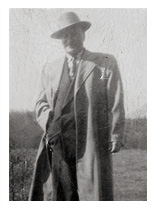 In this audio recording Chief Ben Christmas explains what the Marriage ceremony involved for the Mi’kmaq, prior to contact with Europeans.
In this audio recording Chief Ben Christmas explains what the Marriage ceremony involved for the Mi’kmaq, prior to contact with Europeans.
Translation
Katu etuk mu kisi ajkne’nukw kijka’ nutmu’kw ta’n teli malie’ulti’tiss Mi’kmaq ke’sk mna’qw alasutmaqn melkipukua’sinukwek kmitkinaq.
L’pa’tu mikwite’tk wmalie’win amuj pa tmk wnki’ku tmk kekinua’tuaji. Toqo tlisip kekinua’tut saqmaw kisna ta’n wen nikanus ula utan kisna utanji’jk ta’n eimi’tij. Tlisip saqmaw kisna nikanus wikumaji wikma mawita’lin nutuanew ula L’patu’l kisna l’pa’tu’sl teli-ktu’-malie’wilij. E’pite’sk elt nekmow wikmujik jukwita’new. Ta’n wen welite’lsit malie’winew ula l’pa’tu’sl, jiptueke’l pasik tapusijik pekisinkik. Jiptueke’l ne’sijik kisna jiptueke’l aji-pikwelkik, asukom, l’uiknek kisna me’ atelkik. L’pa’tu’s na nekm mknatal ta’n welamatl wmalie’winew tlia’ mna’qw ala’ti’tikw kisna kelulti’tikw. Kisi-ktapekiej ula e’pite’s toqo kaq-pita’tij ula e’pite’sk, toqo tlisip l’pa’tu’s ketapekiet. Ketapekiatk netukulimkewey ktapekiaqn mita netukulit na. Aq nespiw i’-la’lukwejl ta’nl e’pite’sl welamajl. Si’stewey ela’lukwej ula nkute’l e’pite’sl, na na nekm welamkusit aq meknut malie’winew ula l’pa’tu’sl. Toqo tlisip saqmaw teluemk toqopukua’laji. Kisi malie’wi’tij toqo tlisip wenaqa’sik meski’k wi’kupaltimk. Ketapekia’tijik, mijisultijik, aq amalkaltijik. Jiptueke’l tapukunaq kisna nesukuna’q teli-pkijiaq ta’n kinu nike’ tel-wi’tmu’k, wetn. Ke’sk mnaqw pekije’nukw ula ji’nm ta’n kis-malie’wit miamuj pa kekinua’toq ketloqo klu’lktn ta’n teli-tqwa’ma’tij kisna moqwe. Apj kaqi-tla’sik koqoey ta’n tela’sikip malie’wi’titek. Kelu’lk ta’n teli-tqonasi’tij keknue’k na apj ktapekiaqn ji’nm ketapekiatk. Aq kisintoq, keju’t klu’lktn ta’n teli-tqwa’ma’tij aq apj wi’kupaltimk aq meski’k wlta’suaqn. Katu mu kelu’lktnukw ta’n teli-tqwa’ma’tij, apj na ji’nm keknue’k ta’n ketapekiatk na ktapekiaqn. Aq kisintoq, na tlisip meskata’suaqn aq atkitemuaqn maja’sik. Na’ na telamu’kiss niktua’taqn tmk ta’n nike’ kinu tel-wi’tmu’k Aklasie’wiktuk, divorce. E’pit skmtuk apaja’sit wnki’kiktuk aq ji’nm elt nekm apaja’sit wnki’kiktuk. Na’ teli kaqiaq malie’utimuow. Katu, kisi malie’witaqq na apj a. Ji’nm e’pite’sl pilue’l kisi-mknatal kisna e’pit ap mknuj kisi malie’witew.
Kespi-a’tuksijik pe’l.
I suppose however, it wouldn’t hurt to hear how the Mi’kmaq married before the (Christo-European) belief was firmly supplanted in our territory.
When it dawns on him that it’s time to marry, a young man must first notify his parents. Then the chief or whoever is the head spokesperson in the particular village where they live is notified. The chief or the spokesperson then calls his people to gather to listen to the young man who wishes to marry. The young women are also asked to come. Whoever feels confident enough to marry this young man, possibly only two will arrive. Possibly even three or possibly more will arrive, six, seven or even more. The young man will be the one to choose which one he finds attractive and wishes to marry even though they’ve never dated or even spoken. Once the young woman completes her song and all the young women sit, then the young man sings. He sings a hunting song because in reality, he is hunting. He also intermittently dances near the girl he finds attractive. After his third, close dance-by, then that is the one who is seen to be attractive and is therefore chosen as the bride-to-be for this young man. It is then the chief who will join them in marriage. Once they are married a big feast is then prepared. They sing, eat and dance. Sometimes the celebrations last two days or three days in what we call today a wedding. Before too long this young man who had recently married, must demonstrate as to whether his union is a good one or not. Then everything is repeated as it was when they initially got married. If their co-habiting is good, then the young man sings a particular song. When he finishes singing, then it is known that their union is good and another feast is had and there is great joy. However, if their union is not good, then the young man sings a particular song. After he completes the song then there is great sorrow and much crying begins.
That’s what separation was like, what we refer to today in English as divorce. The young woman simply returns to her parents and the young man returns to his. That is how their marriage ends. But they can get married again. The young man can choose another young woman and the young woman, if chosen again can re-marry.
That’s the end of the story for now.





